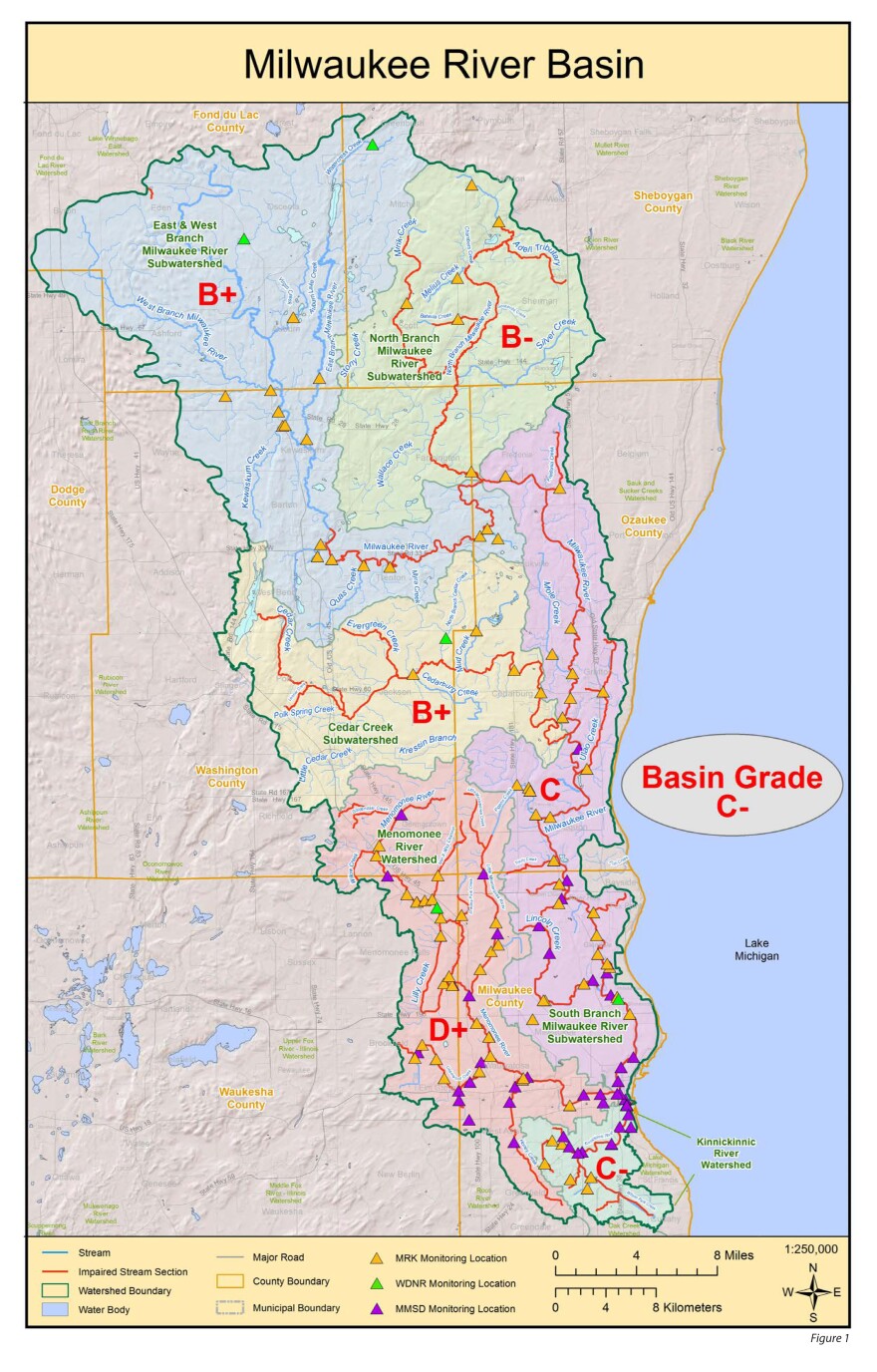Milwaukee Riverkeeper describes itself as “a science based advocacy organization working for swimmable, fishable rivers.” Unfortunately, the Milwaukee River Basin, which includes the Kinnickinnic, Menomonee, and Milwaukee Rivers and their tributaries, has some work to do before reaching that swimmable, fishable goal.

For the past decade, Riverkeeper has dispatched dozens of citizen scientists to monitor water quality in nearly 100 spots throughout the basin.
"One of the good things about citizen monitoring is that they keep an eye on things," riverkeeper Cheryl Nenn says. The organization's volunteers help monitor the water quality, "which gives [Milwaukee Riverkeeper] the information we need to identify problems and work with DNR, MMSD and others to find solutions."
The group also uses that data to produce a report card on the basin's health.
Although it has greatly improved over the years, 2015's monitoring indicates the basin has plenty of room for improvement.
Riverkeeper released its 2015 report card recently and the basin earned a C-, the same grade it received the year before.
WUWM's Susan Bence accompanied Milwaukee Riverkeeper's Cheryl Nenn and water quality specialist Zac Driscoll to three different spots to learn firsthand how water quality varies dramatically from one location to the next.

Batavia Creek
Driscoll uses a homemade pole sampler, a long PVC pipe with a plastic bottle rubber banded to its end, to monitor water temperature, phosphorus levels, chloride and conductivity, or salt concentration.
Salt concentration is something he measures a lot in the winter because of road salt. "Typically, we see higher salt concentrations in more urban areas," Discoll explains.
He's seen some numbers for salt concentration that have been "insanely high, off the charts."
"That's really bad for fish and wildlife because they are not adapted. They are fresh water fish and fresh water invertebrates and they are not adapted to living in those types of environments," he explains.
Batavia Creek, which is located in the northern half of the basin in Sheboygan County, is considered a headwater stream. "It's very close to the headwaters of the Milwaukee River system," Nenn says. "A lot of them are very small creeks... these creeks tend to be very impacted by climate. We often see a lot of good water in the spring and good water in the fall. And, then in the summer, we get kind of drought periods where we don't get a lot of rain and the creeks can get very low and almost stagnant... so the pollution can be more concentrated."
This creek ranks as one of the worst for water quality in the system. It received a D- grade in 2015. It drains a lot of agriculture land use. "A lot of the time, the quality of the water is reflective of what's going on around the creek, on the land," Nenn says.

Nichols Creek
Just 10 minutes north, Nichols Creek is a completely different story. It flows through protected land.
The DNR purchased the land as part of a scenic farmland conservation program.
"Unlike [Batavia Creek], the land use around this creek, a lot of it is in preservation and conservation. It is owned by the State of Wisconsin, and in some cases, still owned by private landowners but with conservation easements on their proprieties," Nenn explains.
"[Nichols Creek] basically gets a 100 percent compliance every time we come to monitor it," she says. "So, it gets an A+."

Pigeon Creek
The last stop is to Pigeon Creek in Thiensville, not far from where it flows into the Milwaukee River.
"We've been monitoring [this creek] for quite a long time,"Nenn says. "And, I think, in general it has been pretty high water quality - especially for a suburban stream. As you get further upstream in this little creek, the water quality improves more and more."
"It just goes to show... that even in a suburban area, you can still have a really high quality watershed if you've been careful to protect a lot of the areas that are draining into the water. But, it is also a creek we keep an eye on because there's a lot of development, a lot of conversion of farmland to subdivisions and homes."







